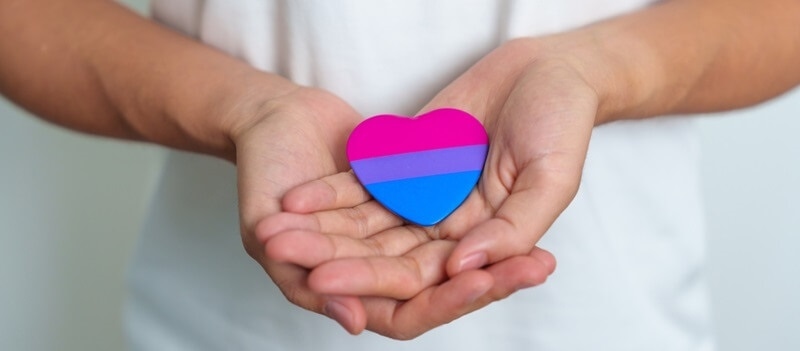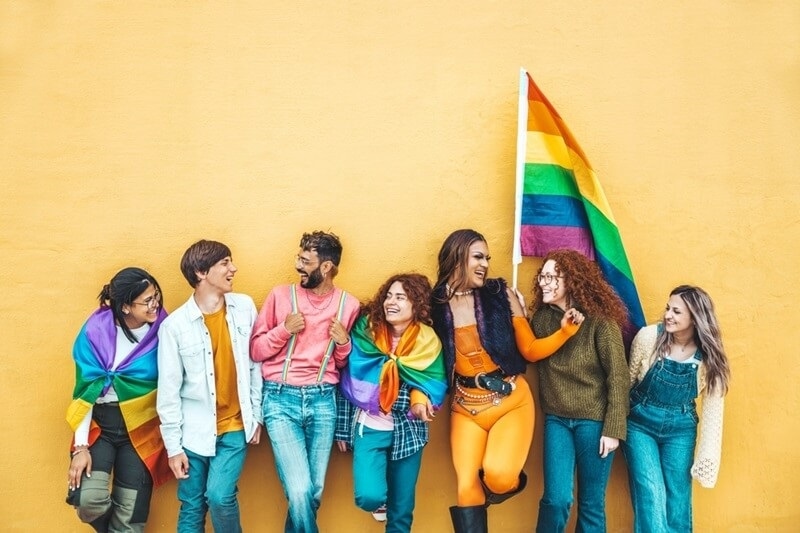Dealing with Homophobia in Workplace: LGBTQ+ Professionals

Let’s get something out in the open—homophobia in the workplace is still a thing. Yes, even in 2025. Even in “progressive” industries. Even at companies with rainbow logos every June.
It can look different depending on where you work. Sometimes it’s loud and blatant. But often, it’s quieter—side-eyes, offhand comments, exclusion from group chats, or being passed over for promotions no one wants to talk about.
And if you’re LGBTQ+, it’s exhausting. It’s walking into meetings with your guard up. It’s wondering if you're being “too much.” It’s checking how your partner’s pronouns might land in casual conversation.
If you’ve ever felt that mental math mid-introduction—you’re not alone. We see you. We are you.
This guide is for anyone navigating that messy, often-unspoken experience of being LGBTQ in the workplace. Whether you’re out and proud, quietly figuring it out, or somewhere in between—this is your space.
The Microaggression Minefield
Let’s be real for a sec. Most people know better than to yell slurs in the office (and if they don’t, HR better be ready). But what about the subtle stuff?
- “Oh, I never would’ve guessed you were gay!”
- “You’re trans? But you look so normal!”
- “We don’t care what you are, as long as you keep it professional.”
These aren't compliments. They're microaggressions. And they’re part of what makes lgbtq workplace discrimination so slippery and hard to call out.
You don’t always have the energy to explain why that comment sucked. Sometimes you're too tired. Sometimes you're too outnumbered. Sometimes you're too afraid of being labeled “difficult.”
And that’s okay. Protecting your peace doesn’t make you weak—it makes you strategic.
You're Not “Overreacting”—You're Sensing a Pattern
Let’s pause on that idea for a moment.
So many LGBTQ+ professionals get gaslit into thinking they’re imagining things. That they’re “too sensitive” or “making it a big deal.” But if your gut keeps whispering something’s off? Listen to it.
If your straight coworkers talk about their spouses freely, but you feel weird mentioning yours? That’s a red flag.
If everyone’s invited to the after-hours networking event except you? Another red flag.
If you’ve had to tone down your voice, mannerisms, or wardrobe just to blend in? Yeah, you guessed it—red flag city.
LGBTQ in the workplace isn’t just about being “allowed” to exist. It’s about being able to show up fully without fear of punishment, exclusion, or whispered judgment.
Real Talk: Coming Out Is Still a Risky Move
Remember when you thought once you came out, it’d be done and dusted?
Spoiler: coming out is a forever thing. Every new job. Every new team. Every new coworker who asks, “So, what does your husband do?” when your partner's name is Ava.
And let’s not pretend it’s always safe.
In some offices, coming out leads to deeper connection, trust, and respect. In others? It leads to isolation, subtle sidelining, or even outright hostility.
This is why lgbtq workplace discrimination remains one of the most underreported issues in corporate culture. People don’t speak up because they know the cost—and it’s not always worth it.
So if you’re not out at work yet, that’s your call. You’re not lying. You’re surviving.
What to Do If You’re Facing Homophobia at Work

Let’s get practical. If you're dealing with direct or indirect homophobia in the workplace, here are some strategies that don't require you to burn out or burn bridges.
1. Document Everything
Seriously. Keep receipts. If someone says something inappropriate or you notice a pattern, start a private doc. Log dates, times, what was said or done, and who witnessed it.
You may never need it. But if things escalate or HR gets involved, you’ll be glad you had a paper trail.
2. Find Your People
Whether it's a colleague who gets it, a Slack channel for LGBTQ+ employees, or even a friend outside of work—don’t go through it alone. Sometimes just hearing “Yeah, that was messed up” makes all the difference.
If your workplace has an employee resource group (ERG) or a DEI committee, plug in. Not just for support—but to influence policy and culture from the inside.
3. Use HR Strategically (But Cautiously)
HR exists to protect the company. That doesn’t mean they can’t help—but don’t assume they’re always on your side.
When you bring something to HR, be specific. Be calm. Stick to facts. Bring that doc we talked about.
And if you’re afraid it won’t be taken seriously? Ask about confidentiality, retaliation policies, and next steps before you dive in.
Read More: Mental Toughness & Its Impact on LGBTQ+ Mental Health
A Note to Companies: Rainbow Logos Don’t Fix Culture
Every Pride month, brands slap rainbows on their logos and call it allyship. But here’s the thing: if LGBTQ+ employees are still hiding who they are at work, your colors are just decoration.
Here’s what real support looks like:
- Creating lgbtq inclusive workplace policies year-round
- Offering lgbtq training for workplace leaders, not just entry-level staff
- Ensuring benefits cover trans health care
- Hiring diverse leadership—not just for show
- Calling out bias when it shows up (even in the C-suite)
If companies want to brag about being inclusive, they need to back it up where it counts: inside the walls, not just on the timeline.
Let’s Talk Burnout—Because It’s Real
There’s a specific kind of exhaustion that comes with code-switching. Hiding. Navigating landmines. Being the only one. Explaining your existence, over and over again.
That kind of emotional labor doesn’t show up in your job description, but it drains you just the same.
If you’re feeling burned out, consider:
- Taking time off (if you can)
- Looking into therapy, especially queer-affirming spaces
- Setting firmer boundaries around what you don’t owe your job
- Reconnecting with community outside of work
Burnout isn’t just about workload. It’s also about environment. If your lgbtq workplace is constantly chipping away at your peace, no amount of yoga or sleep will fix that.
When It’s Time to Leave
This one’s tough.
Because sometimes, no matter how hard you try to push change from within, the system doesn’t budge. And staying starts to feel like shrinking.
If you’ve hit that wall—know that leaving doesn’t mean giving up. It means protecting your energy. Choosing yourself.
There are workplaces out there doing the work. Places where being queer isn’t “a challenge”—it’s just part of the fabric. Keep an eye out for those.
Ask about policies. Check the leadership team. Read the Glassdoor reviews. Ask hard questions in interviews.
You deserve more than tolerance. You deserve safety. Joy. Belonging.
Your Move:
- Talk to someone.
- Join or start an LGBTQ+ group at work.
- Share this post with your team.
- Or simply take a deep breath and remind yourself—you’re not imagining things. You’re not being “too much.” You’re navigating a system that still has a long way to go.
And you’re doing it with more courage than most people will ever understand.
Also Read: Queer Comedy Specials You Must Watch for Big Laughs
Final Thoughts: You’re Not Alone in This
If this post felt like it was reading your diary—good. That means it’s real.
LGBTQ in the workplace shouldn't have to mean hiding, shrinking, or constantly doing damage control. It should mean showing up fully, doing great work, and being celebrated for exactly who you are.
But until every company walks the talk, we keep having these conversations. Loudly. Honestly. Relentlessly.
Because the more we name it, the more we can change it.























